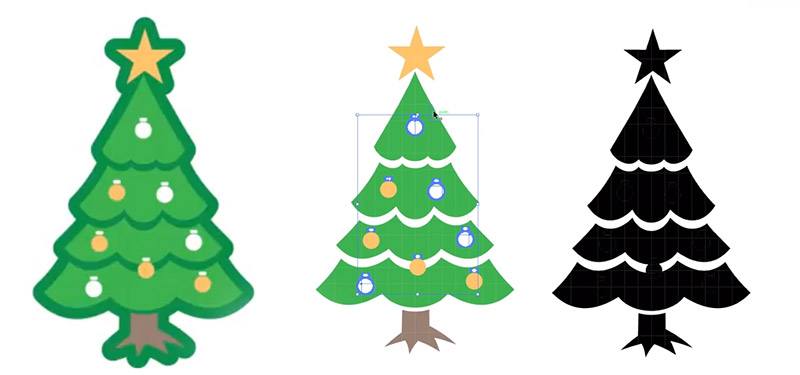Badgelife and the rise of artistic PCBs are pushing the envelope of what can be done with printed circuit boards. And if you’re doing PCB art, you really want to do it with vectors. This is a surprisingly hard problem, because very few software tools can actually do DXFs and SVGs properly. Never fear, because [TallDarknWeirdo] has the solution for you. It’s in Eagle, and it uses Illustrator and Inkscape, but then again this is a hard problem.
The demonstration article for this example is just a Christmas tree. It’s somewhat topical green soldermask is standard, FR4 looks like wood, and silver and gold and all that. [TallDarknWeirdo] first split up this vector art into its component pieces — soldermask, bare FR4, and copper — then imported it into Inkscape to make the SVGs. This was then thrown into an online tool that creates something Eagle can understand. The results are better than importing bitmaps, resulting in much cleaner lines in the finished board.
Quick word of warning before we get into this, though: if you’re reading this in 2019 or later, this info might be out of date. Autodesk should be releasing a vector import utility for Eagle shortly, and we’re going to be taking a deep dive into this tool and complaining until it works. Until then, this is the best way to get vector art into Eagle.
Oh, and [TallDarknWeirdo] is none other than [Bradley Gawthrop], who’s put more time in crimping wires than anyone else we know.
















Simple just use KiCAD instead, no effort at all.
+1
OMG Eagle doesn’t just do that without requiring a hack? I was confused reading the summary. Surely they aren’t talking aobut simply importing a vector image. That’s such a simple and basic feature and Eagle at least has KiCad’s level of functionality right?!?! But nope, I guess not. Your post is confirming it. Wow! Why is anyone still using Eagle?!?!
I don’t understand how to do what you’re asking me to do.
aha, “Go Gordon !” ( the maker of the online tool & the Espruino platform ;) )
The current version of Eagle supports DXF import, and gives the ability to convert a closed loop to a polygon
Sadly, this doesn’t support compound paths.
There are also tools like the following inkscape extension scripts
https://github.com/erichVK5/inkscape2pcb
…which can export footprints usable by pcb-rnd, gEDA PCB and kicad.
HPGL path import is also supported by pcb-rnd, which can save in kicad format, fwiw.
There is also the following standalone utility for generic svg polygon and path export to .mod files that kicad and pcb-rnd can load
https://github.com/mtl/svg2mod
I did try both of these, but sophisticated source files cause them both to fail routinely. If they work on your files, that’s great and will save you some time.
Designing in a vector based tool is the way to go, but I’ve had excellent luck rasterizing at 500dpi using Inkscape’s *.png export tool and converting to footprints using KiCad’s Bitmap2PCB. I don’t really need to import vector graphics directly. I don’t feel the quality of my designs has suffered as a result.
Bitmap import works fine, but if there’s some simple vector-based design, it would be nice to be able to have it in vector form. Also, if you can import vectors, you can import PCB contours from CAD software.
I come from a printing background, so I am probably needlessly fussy. In many circumstances this would probably be fine. A lot depends on your fab house and their methodology for making screens. The photo output process used for imaging the copper and solder mask is capable of much higher resolutions than 500DPI, and the files resulting from this process are also tidier (not to mention smaller) but I’m not trying to convert anybody, just sharing one way.